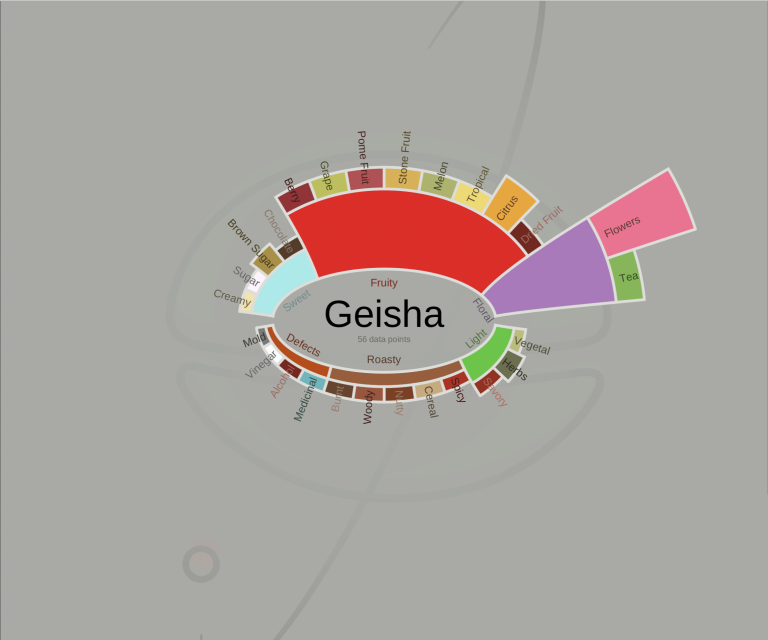Coffee Varieties
Ethiopia is the source of the first coffee tree, Typica. The same variety is still widely cultivated today. Today, there are a great many varieties, some of which are natural mutations and others that result from cross-breeding. This variety can have specific flavor characteristics, but other varieties develop their characteristics based on where they are grown, how they are cultivated, and how they are processed after harvest.
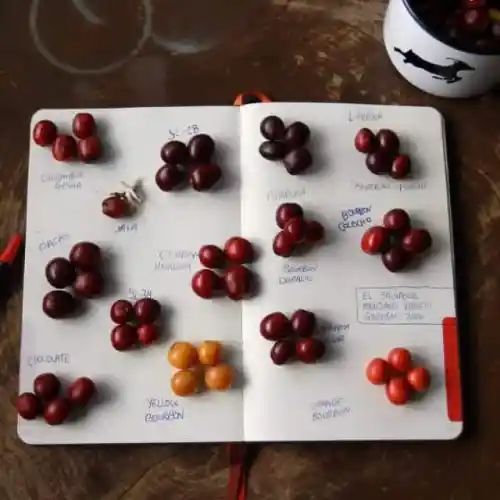
Several varieties of Arabica coffee trees and coffee plants exist in the world, and most consumers are not aware of the differences because most coffee is traded based on origin. There may be many farms contributing to a particular lot, and by the time of export, no one knows what varieties the contributing producers grew, only where in the world it was grown. We know increasingly more about the impact a specific tree variety may have on the flavor of coffee, but there is still so much more to learn.
Below, I have provided descriptions of the most common varieties, but they do not include specific tasting notes unless something definite and distinct is mentioned. The cup quality is influenced by so many factors, and there is no organized research on how variety can influence this.
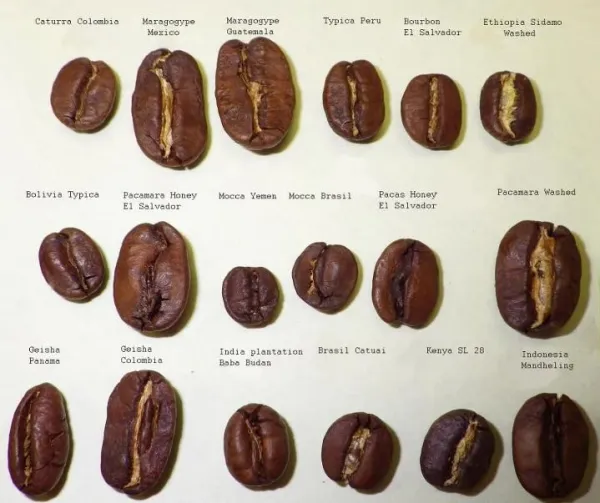
TYPICA
Typically, this variety is the original from which all subsequent varieties were further developed from. Dutch traders were the first to export coffee around the world for commercial production, and they brought this variety with them. Typica produces excellent cup quality, despite a low yield when compared to other varieties, and its fruit is usually red. This plant is still widely grown in many countries and is known by several different names, including Criollo, Sumatra, and Arabigo.

BOURBON
There was a natural mutation of Typica that happened on Réunion island (formerly known as Bourbon at the time). Those who work in the specialty industry believe it has a distinctive sweetness, which makes it an attractive crop. It yields more than Typica, and has a higher yield than most other varieties. Variations in color appear in the fruit, such as red, yellow, and orange. Several producing countries used to grow this variety extensively, but they later replaced it with varieties that harvested higher yields.
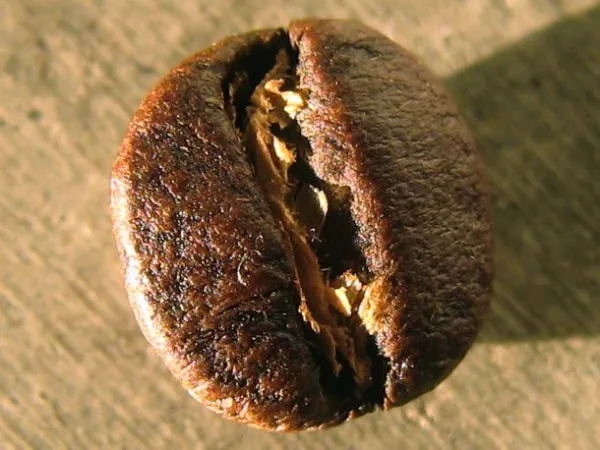
It was produced at a time when the market had not yet matured enough to allow a high enough price to compensate for its lower yields in comparison with newer varieties. These coffees are a little sweeter and have a caramel-like taste, as well as a nice, crisp acidity. However, their flavors can vary quite a bit based on their geographic origins. Butter, toffee, and fresh pastry will dominate the El Salvador Bourbon; Rwandan types are fruitier.
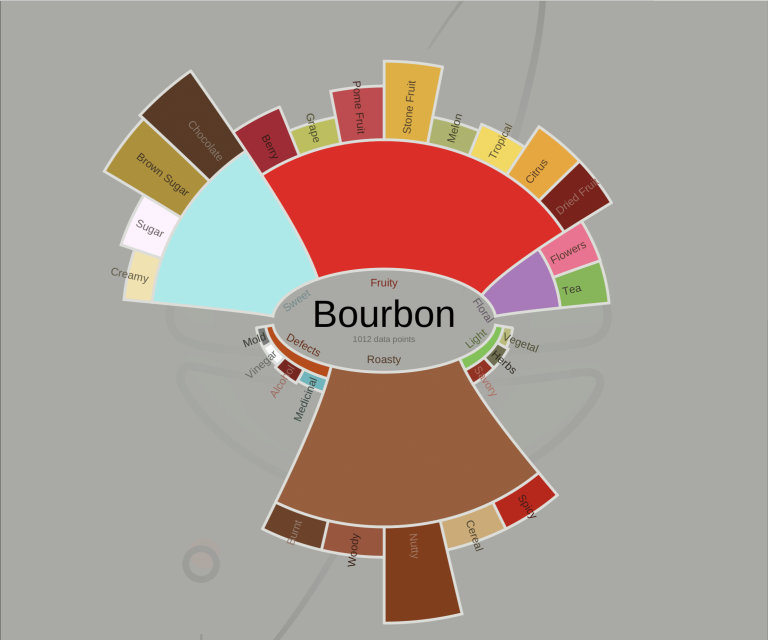
MUNDO NOVO
This variety was originally a cross between Typica and Bourbon named after its discovery in Brazil in the 1940s. Growing at altitudes of around 1,000 to 1,200m (3,300 feet to 3,900 feet) which is an elevation very common in Brazil, and it is particularly popular because of its relatively high yield, durability, and disease resistance.
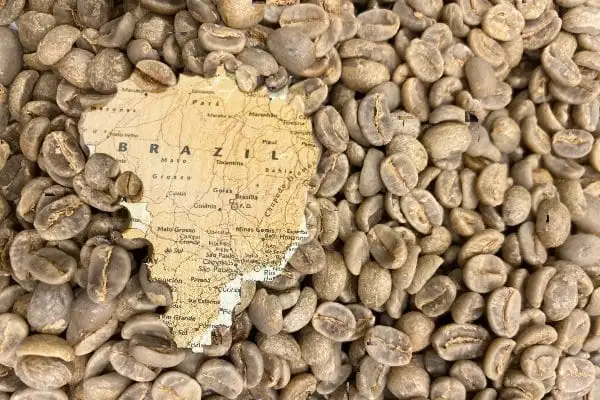
CATURRA
The strain originated in Brazil and was discovered in 1937 as a mutation. The tree produces high yields, but it can sometimes overbear, where too many seeds are produced which causes the tree to succumb to dieback. This problem can be avoided, however, by good farm management. Brazil is still one of the most common places to find this variety, and in time this variety has gained popularity particularly in Colombia and Central America.
Although yield decreases with altitude, cup quality is considered good at high altitudes. In addition to their red and yellow variations, this is a very low altitude-growing variety, also called dwarf or semi-dwarf. It is popular among picking enthusiasts because they are easier to pick.
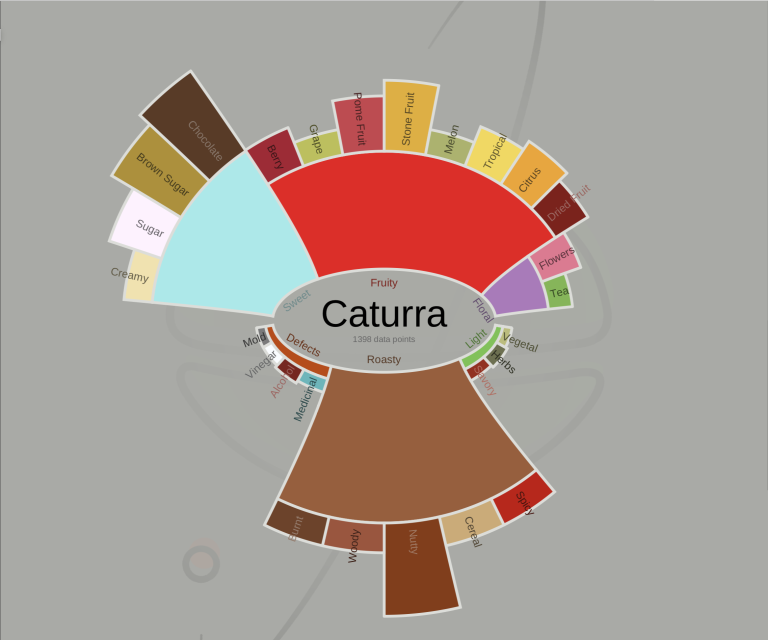
PACAMARA
This cross was created in 1958 between the Pacas and the Maragogype varieties in El Salvador. The leaves, fruit, and beans of this plant are extremely large, as well as its leaves. While a cup may taste like fruit or chocolate, you may experience bitter, onion-like flavors as well. During ripening, the fruits turn red.
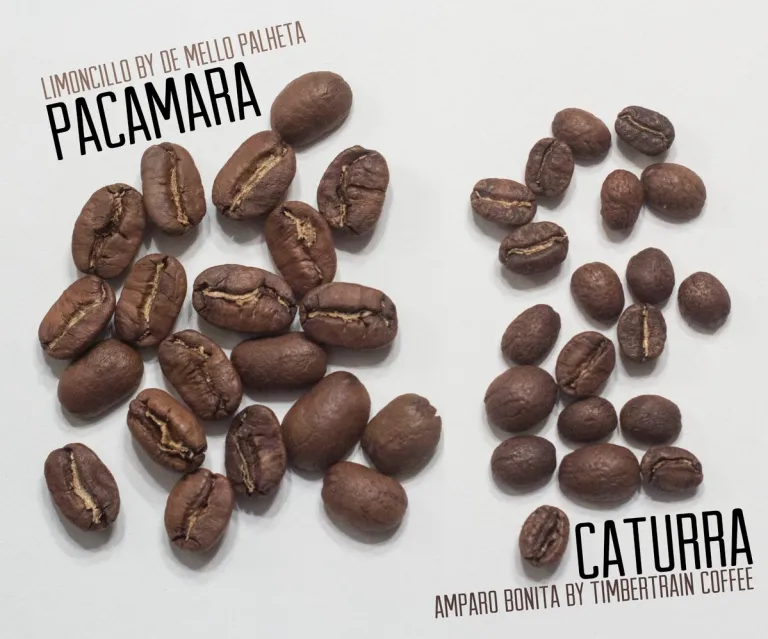
CATUAI
This cross was created by the Instituto Agronomico do Campinas in Brazil between 1950 and 1960, combining Caturra and Mundo Novo. The selection was made because it combined the dwarf characteristics of the Caturra with the yield and strength of Mundo Novo. As with Caturras, yellow and red varieties are available.

MARAGOGYPE
Maragogype, which is a mutation of Typica, is among the more easily recognized varieties. This variety has an unusually large number of beans, and it is regarded as desirable because of ease of harvesting. Despite having large leaves, the tree produces a relatively low yield. Because of their size, these coffees are often called ‘Elephant’ or ‘Elephant Bean’ coffees. Red ripening is common for the fruits.
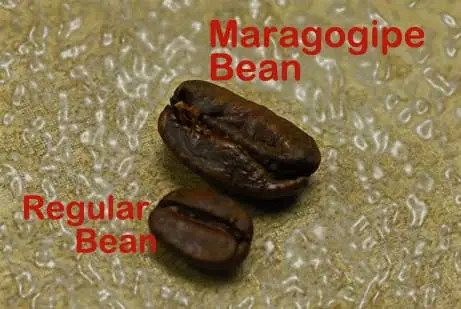
PACAS
Originally from El Salvador, Pacas is a variant of Bourbon that was discovered by the Pacas family in 1949. The fruit is red, and it grows at a low level, making picking easy. Consequently, it is regarded as being similar to Bourbon in terms of cup quality.
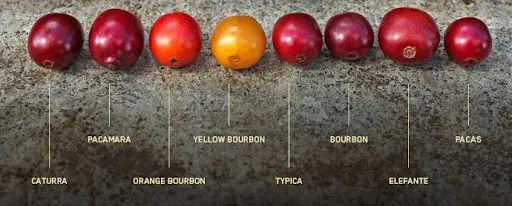
VILLA SARCHI
A natural mutation of Bourbon found in Costa Rica with fruits that also ripen red, this is another mutation that exhibits dwarfism like Pacas. Current research is focused on breeding it to produce high yields and to produce excellent cup quality.
SL-28
In the 1930s, Scott Laboratories created SL-28 in Kenya from a Tanzanian drought-resistant variety. As the fruits ripen, the fruit color turns to red and the beans become noticeably larger. A cup brewed from this variety has a flavor often compared to blackcurrant, often being described as sweet and fruity. As a result of its susceptibility to coffee leaf rust, it performs better at higher altitudes.
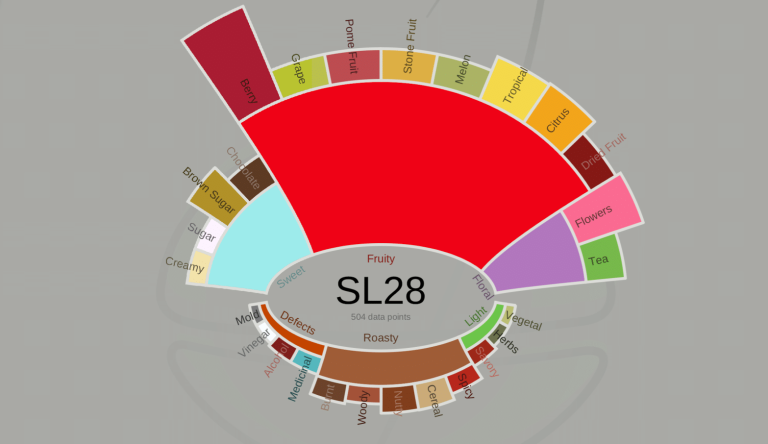
SL-34
Selections were made from the French Mission Bourbon, which was brought back to Africa from Bourbon (Réunion island), first appearing in Tanzania, then in Kenya. In terms of quality, it is also notable for its distinct fruit flavors, but it is generally regarded as being inferior to SL-28. Additionally, it is susceptible to coffee leaf rust and its fruits are red when they ripen.
GEISHA OR GESHA
The exact variety name is debated, but the term ‘Geisha’ is more commonly used. The variety originates from Gesha, a town in western Ethiopia. While it was brought to Panama from Costa Rica, it is believed that it originates from Ethiopia. It is regarded as a variety that produces extremely aromatic/floral cups, and the demand for it has driven prices up in recent years. In 2004, a Panamanian farm, Hacienda La Esmeralda, won a competition with offering Geisha beans.
Since then, it has gained a great deal of popularity. In an auction, the coffee raised an astounding $21/pound bid due to its unusual and distinguished qualities. The record bids were broken in 2006 and 2007 when it reached $130/pound – nearly one hundred times the price of commodity-grade coffee. Since then, it has encouraged many producers in Central and South America to plant this variety.
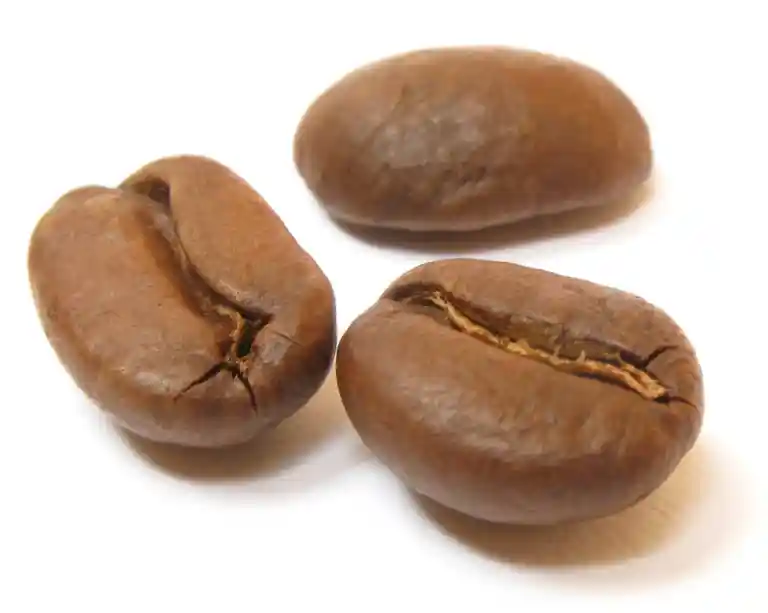
KENT
Named for a planter who worked on a selection program in India in the 1920s, this strain was developed as a beet variety that is resistant to green coffee leaf rust. However, new strains of the disease can destroy it. The S795 bean was additionally developed in India and derived from a cross between Kent and S288, to try and increase its resistance to coffee leaf rust. The plant has been widely planted in India and Indonesia, but recently the resistance has been reduced significantly.
WILD ARABICA VARIETIES
The major majority of the above coffee fruits and coffee beans are all derived from the same variety, Typica, genetically speaking. The majority of coffee trees in Ethiopia are not varieties, but indigenous heirlooms that probably result from cross-breeding between different species and varieties. Until now, not much work has been done on cataloging or evaluating the genetic diversity and cup quality of these wild varieties.
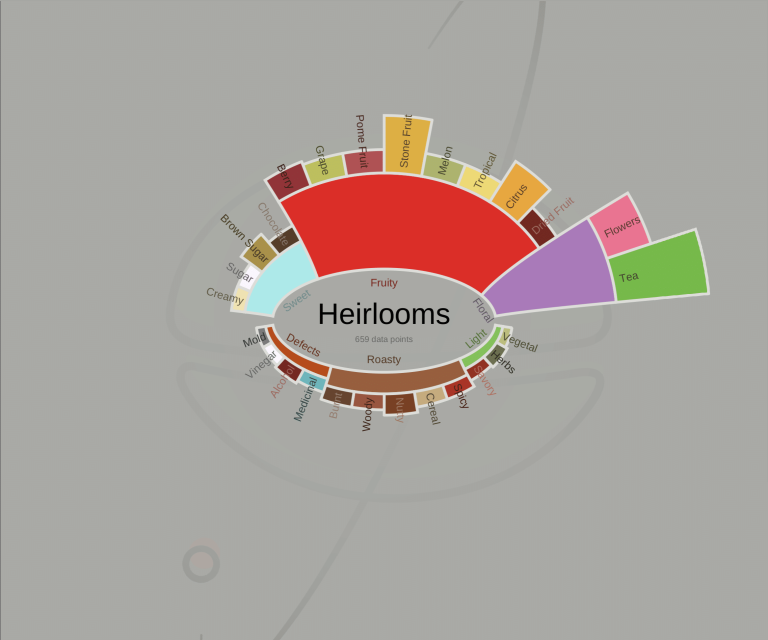
For more info on the different varieties of coffee beans refer to the below diagram
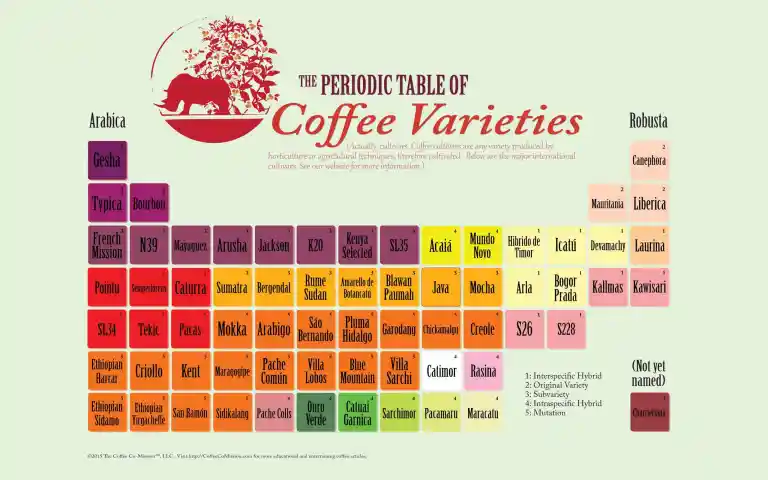
Extra Notes: Difference between VARIETIES AND VARIETALS
The meaning of the terms ‘variety’ and ‘varietal’ can sometimes be confusing. A variety is a genetically distinct variety of a particular species, such as Coffea arabica, that may present different characteristics in terms of the tree structure, leaves, or fruit. Another acceptable term is ‘cultivar’, since it is just a shorthand version of ‘cultivated variety’. The term ‘varietal’ should be utilized with reference to a specific instance of the variety. As an example, referring to a farm’s production of a coffee farmer, it’s correct to say that it is 100% Bourbon varietal.
Disclaimer: This content is for informational and educational purposes only.
